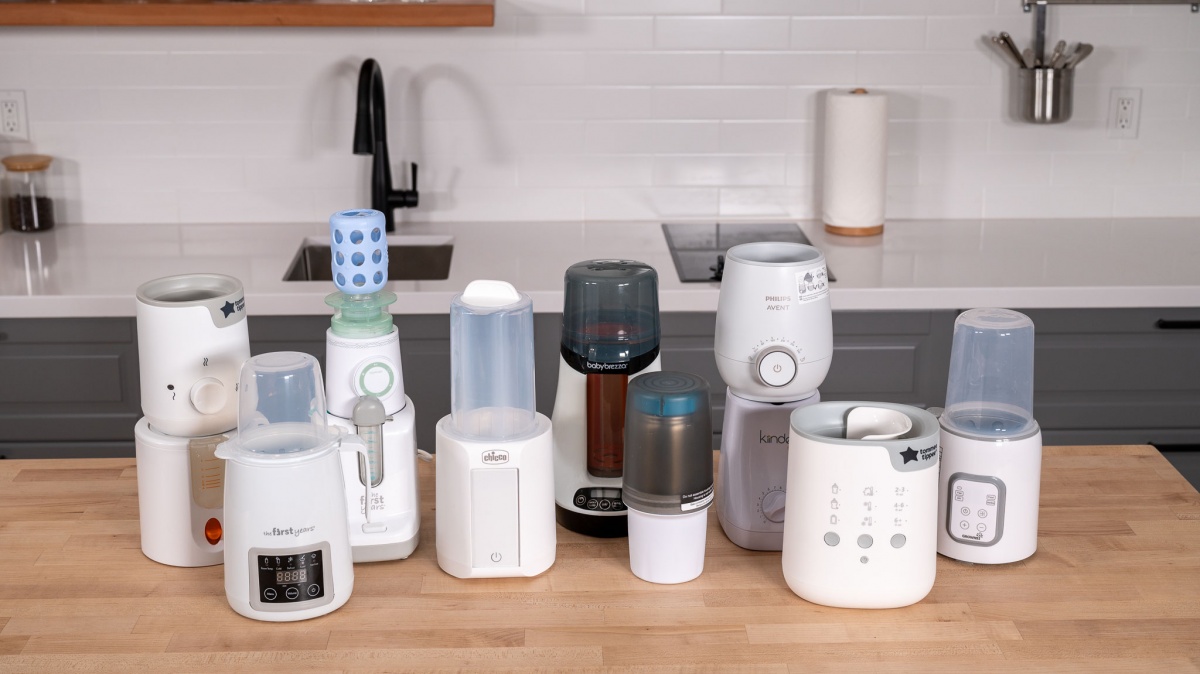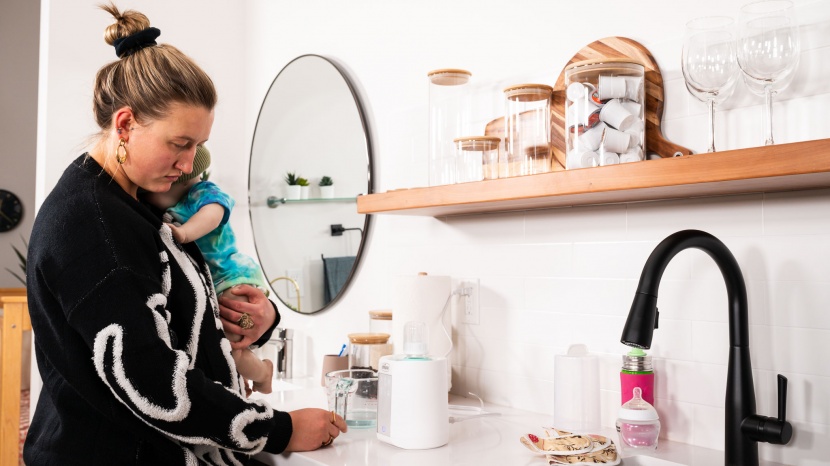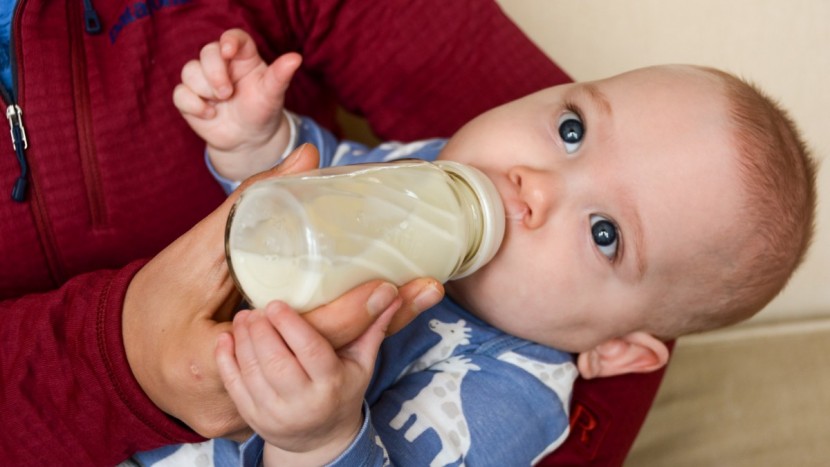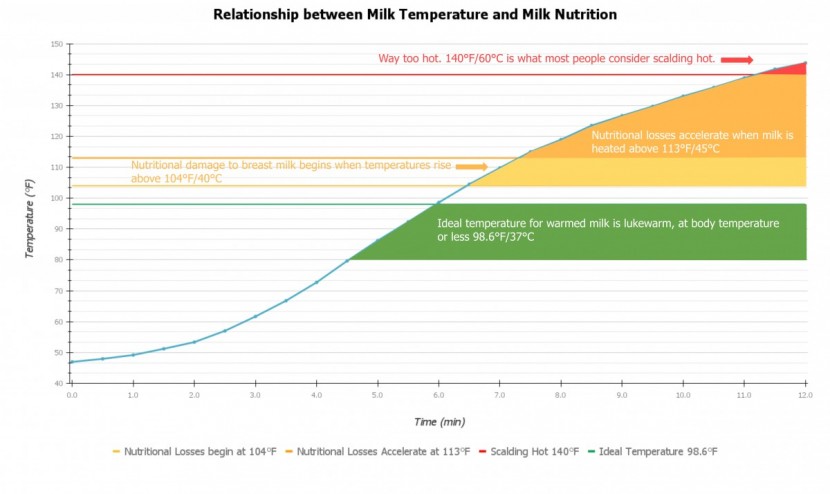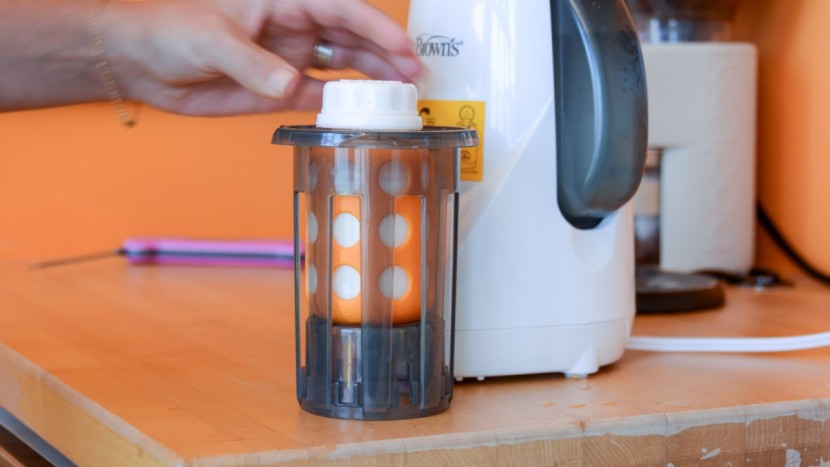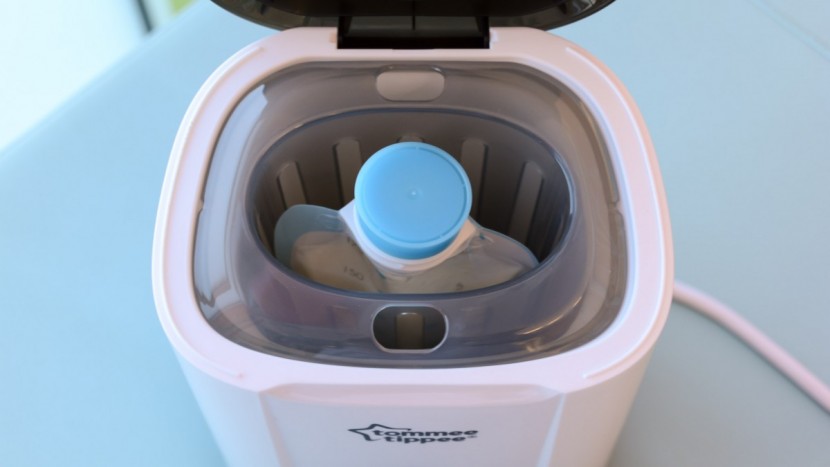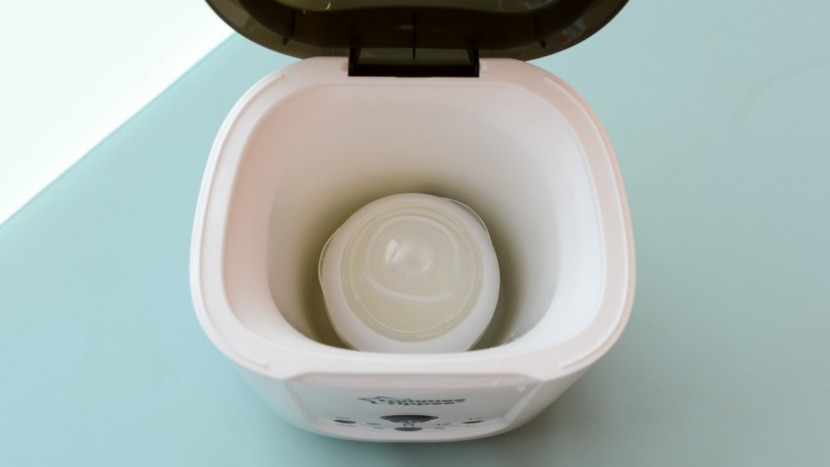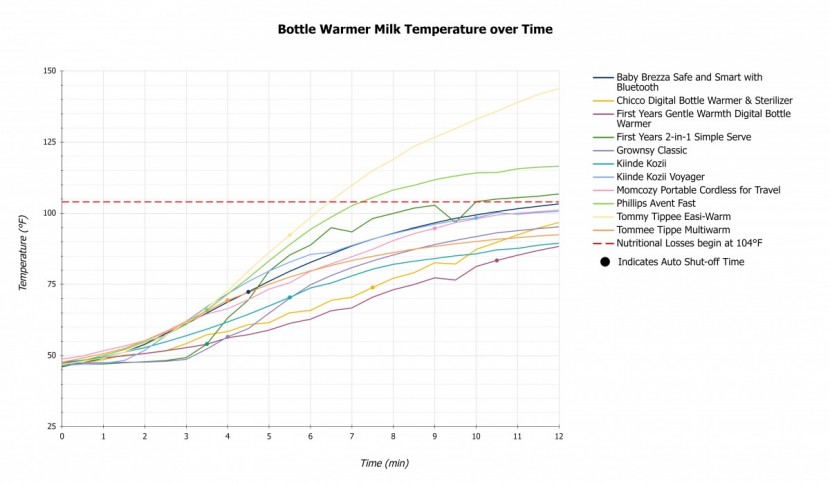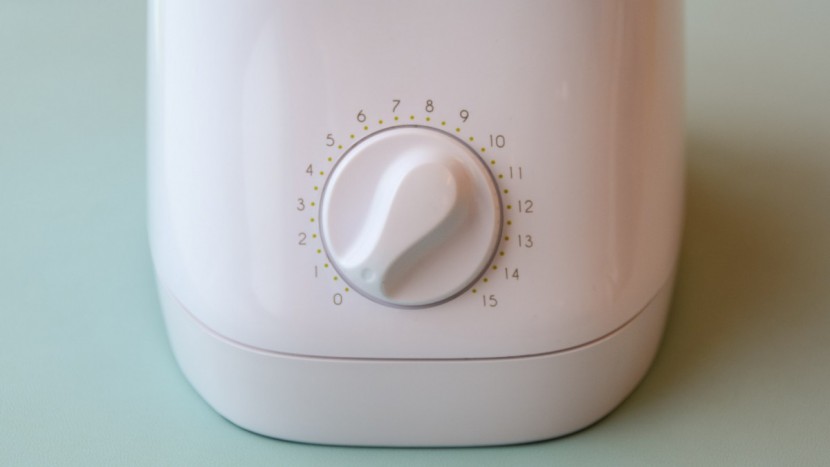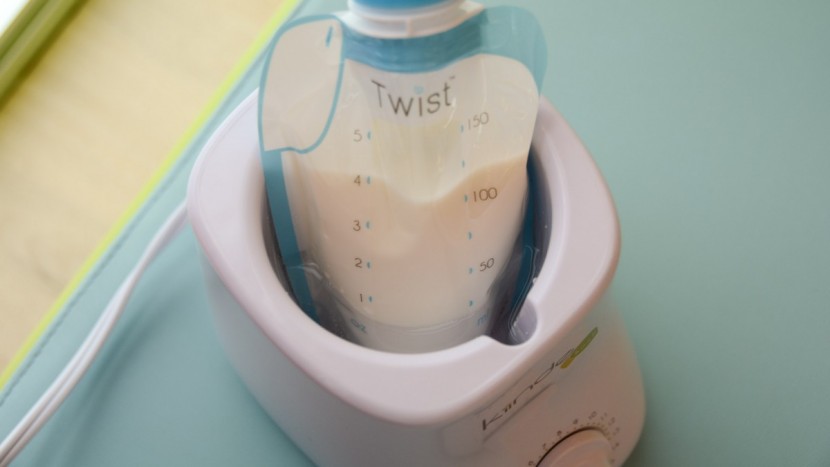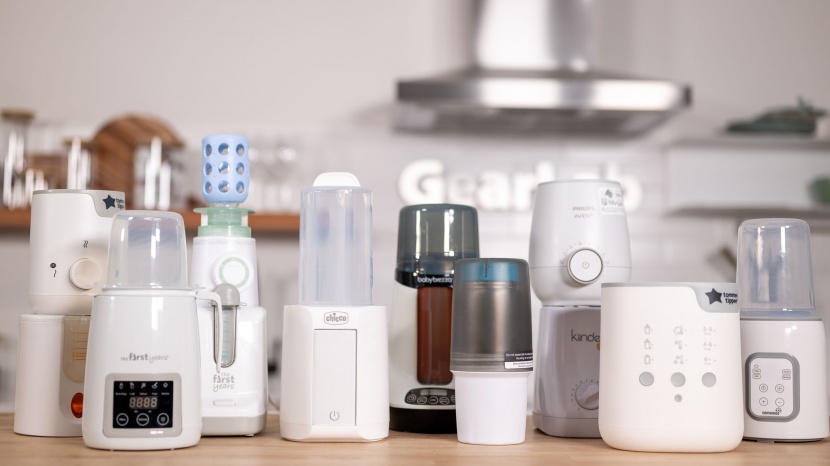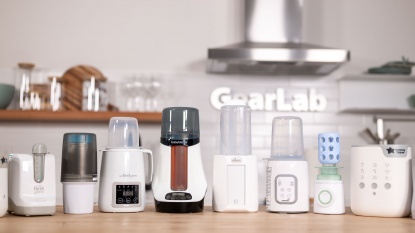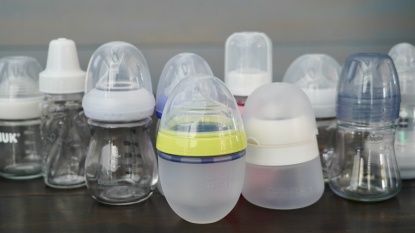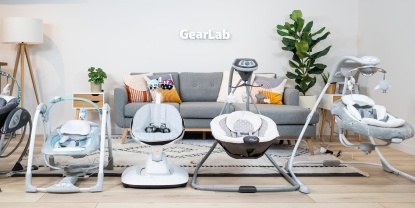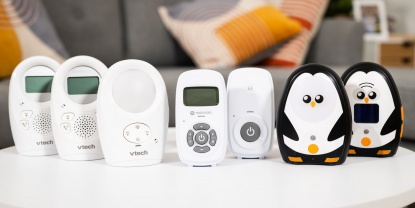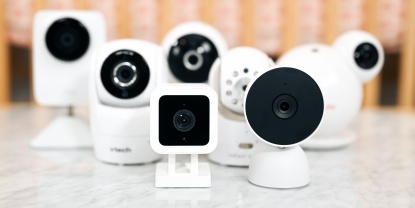We tested bottle warmers in multiple metrics over several months to discover everything we could. We learned the most important qualities and features you would want to look for when purchasing a bottle warmer.
Why Purchase a Bottle Warmer?
While a bottle warmer isn't a necessity, if you're warming more than one or two baby bottles a day or your baby prefers milk to be a certain temperature, then you may find it convenient to have a bottle warmer on hand when feeding your baby.
The bottom line is that a bottle warmer can be a convenient time-saver, but it is not a must-have baby product. So, let's look at the alternatives side-by-side to help you assess whether the cost justifies the convenience.
Breastmilk starts degrading in nutritional and immunological value at 104 F / 40 C, but deterioration accelerates as temperatures climb higher than 113F/45C. You should aim to warm your baby's milk to approximately 98.6 F / 37 C (body temperature) or less.
Three Ways to Warm a Baby Bottle
It's the middle of the night. Baby is hungry, and it's your turn to feed him. Time for the midnight shuffle. Do you grab the baby and then go warm the bottle, or vice versa?
Good options for warming the bottle include:
- Stand at the sink while swirling the bottle under warm tap water (not too hot)
- Put the bottle into a bowl of warm water with intermittent swirling (again, not too hot)
- Use a bottle warmer
The first two options require constant attention, which is asking a lot when you're half asleep with a hungry, crying baby. The advantage of a bottle warmer is that your hands are free, and you can focus on your baby's other needs, like a diaper change or cuddle time.
Is it worth it? That's a personal decision, but many parents find the convenience to be worth the cost, especially if you plan to bottle feed or want to share night duties with your partner to catch up on some valuable sleep.
Never use the microwave to heat your baby's meal, including formula, breastmilk, or purees. High, focused heat generated by microwaves can result in dangerous “hot spots” in both liquids and solids. If not correctly mixed, cooled, and checked, this can result in scalding injury to the baby. Also, a microwave is likely to heat at least some, if not all, of the breast milk above 104 F / 40 C, the temperature at which beneficial enzymes, nutrients, and antibodies begin to degrade, reducing healthful benefits for the baby.
Furthermore, putting a bottle in a pan of boiling water or just boiled water can also lead to overheating and should not be done.Selecting the Right Product
Apart from the convenience of being hands-free when warming a bottle, a great bottle warmer should deliver on the following five factors:
- Health & Safety — Avoiding the risk of burn injury as well as providing nutritionally intact breast milk at an appropriate temperature for the baby is essential. Generally, a good rule of thumb is to heat to near body temperature 98.5F/37C and not much higher. More on this below where we discuss Preserve the Full Nutritional Value of Breast Milk.
- Warming Quickness & Consistency — Ability to warm contents quickly and consistently
- Ease of Use — Easy to operate and maintain - accepts different-shaped bottles of any material
- Ease of Cleaning — How easy is it to keep clean and perform descaling
Preserve the Full Nutritional Value of Breast Milk
As we describe in our related article, Best Practices for Handling Breast Milk, your breastmilk is “liquid gold” in its nutritional value for your baby, but the nutrition can be degraded by overheating.
Once you warm breast milk to temperatures higher than 104 F / 40 C, its nutritional and immunological value begins to deteriorate, both of which are crucial to a baby's health and immunity. However, degradation does not become severe until temperatures rise above 113F / 45C. For example, in a study conducted by the University of Manchester, breastmilk heated for 10 minutes at 113 F / 45 C showed a 10% loss of essential nutritional-activated enzymes. And, just 1 minute at 131 F / 55 C results in a 50% loss of activated enzymes, but no significant damage occurred after 20 minutes at 104 F / 40 C (or lower temps).
Keep in mind that the ideal breast milk temperature is around body temperature, 98.6 F / 37 C, or less, which feels lukewarm.
Water Bath Versus Steam Heat Technology
Bottle warmers use either a warm water bath or steam heat; a few have both.
Water Bath
A water bath warmer heats breastmilk or formula gently by circulating warm water around the bottle. They tend to heat slower, but they heat consistently without the high temperatures required to produce steam. We recommend a bottle warmer that uses water bath technology. The benefits are this gentle warming helps breastmilk retain maximal nutrients, maternal antibodies, and other potential health-promoting factors. We also consider it safer as the water used is warm rather than hot, potentially scalding steam.
Steam Heat
With steam heat, water inside a reservoir comes into contact with an internal heating element (like a hot plate), which produces steam that heats liquid bottle contents. While this method usually heats faster than water baths, hot water and scalding steam rise up to very high temperatures. The result? The bottle's exterior is often very hot after a heat cycle, typically necessitating a cool-down before being useful. If spillage of warmer contents were to occur, the risk of burn injury is present. Also, steam does not always heat evenly. This uneven heating means that significant temperature variations may exist throughout the contents of a heated bottle, and without thorough mixing and checking, hot spots are a risk. In our opinion, these high temperatures carry unnecessary risks.
Lastly, because steam heat typically generates high temperatures, there is an increased potential for nutritional degradation of breastmilk if brought to temperatures >104F/40C. What we found in our testing is that a few of the units make it far too easy to overheat breastmilk, which results in a significant loss of nutritional quality.
Container Versatility
The best baby bottles can be narrow or wide and short or tall. As such, some bottles may not fit inside the bottle warmer's chamber. Also, material limitations may mean that a certain warmer isn't compatible with a particular baby bottle like the Boon Orb and glass bottles. Also, some bottle warmers (usually steam technology) require either plastic or shatter-resistant glass like borosilicate found in Lifefactory Glass Bottle because the quick heating process may cause the glass to break.
If you are uncertain which bottle type and nipple your baby prefers (i.e., they haven't been born yet), choosing a bottle warmer that accommodates all bottle sizes and materials is smart.
Making Your Selection
Considering the various features and options, asking yourself the following questions can help you narrow down your options to help you find the best warmer for your family.
Consider Warming Quickness
Since a bottle warmer's primary purpose is to provide your baby with a comfortably warm meal, this should be a high priority. You'll want to be able to toss in a bottle, tend to the baby, and return to a perfect meal every time. Some warmers are capable of producing a consistently warmed bottle every time, while other warmer results vary, leaving us with an overly hot or still cool bottle. Because time is precious, we urge you to consider a consistent warmer as well as quick.
Is it Easy to Use?
Before a bottle warmer can fit seamlessly into your routine, you have to learn how to use it. Out of the box, the warmers in our tests include a wide variety of “parts,” ranging from one solid unit like the Kiinde Kozii to a unit plus a bunch of extra pieces. Other things to consider are the setting options and heating charts and how hard they are to remember or use. No matter what, using the warmer takes some adjustments and fiddling, but it should be close to the instructions.
It's important to be aware that you will inevitably go through some trial and error before consistently reaching the perfect setting for the particular bottle and starting milk temperature your baby uses most often. But it shouldn't take more than a day or so of fiddling to get your machine working properly.
What's Your Bottle Style?
You'll also want to consider the type of bottle you'll be using. Some warmers don't fit extra-wide-based bottles like a Tommee Tippee. Checking directly with the company is the best way to confirm your bottle will fit, but our specs include what we could find out.
Do You Have Multiples?
Lastly, you should know that many of the warmers have a recommended wait time between running warming cycles consecutively. Being able to start another warming cycle immediately would be very important if you were heating two or more bottles in a row, say for twins. It's also handy if the first cycle doesn't quite get the milk warm enough and you need to add more time.
Can You Keep it Clean?
This metric is pretty self-explanatory, but something you'll want to consider. Although cleaning isn't always a per-use or even daily requirement, cleaning is essential to keeping this type of product in proper running order. We found that unless you spill milk on the unit, cleaning comes down to proper maintenance. Since this type of product uses water in some form or another to warm the bottle, the issue lies in mineral deposits forming somewhere on the unit, usually in the warming chamber and on the heating element.
Every warmer we tested instructs you to use a vinegar solution rinse on occasion (also called descaling) to get rid of these deposits (the Kiinde recommends a bleach/water solution). We also found that the warmers that use a reservoir system carry a higher risk for mold or mildew build-up in the reservoir itself, so they should be cleaned out more often to help avoid that possibility.
Conclusion
Adding a bottle warmer to your nursing and bottle-feeding gear can help things run more smoothly. Our comprehensive testing and review provide the information and details you need to find the right warmer for you and your family. Whether you decide on an award winner or a top contender, you can do so with confidence, knowing you have the information you need to make an informed choice.

